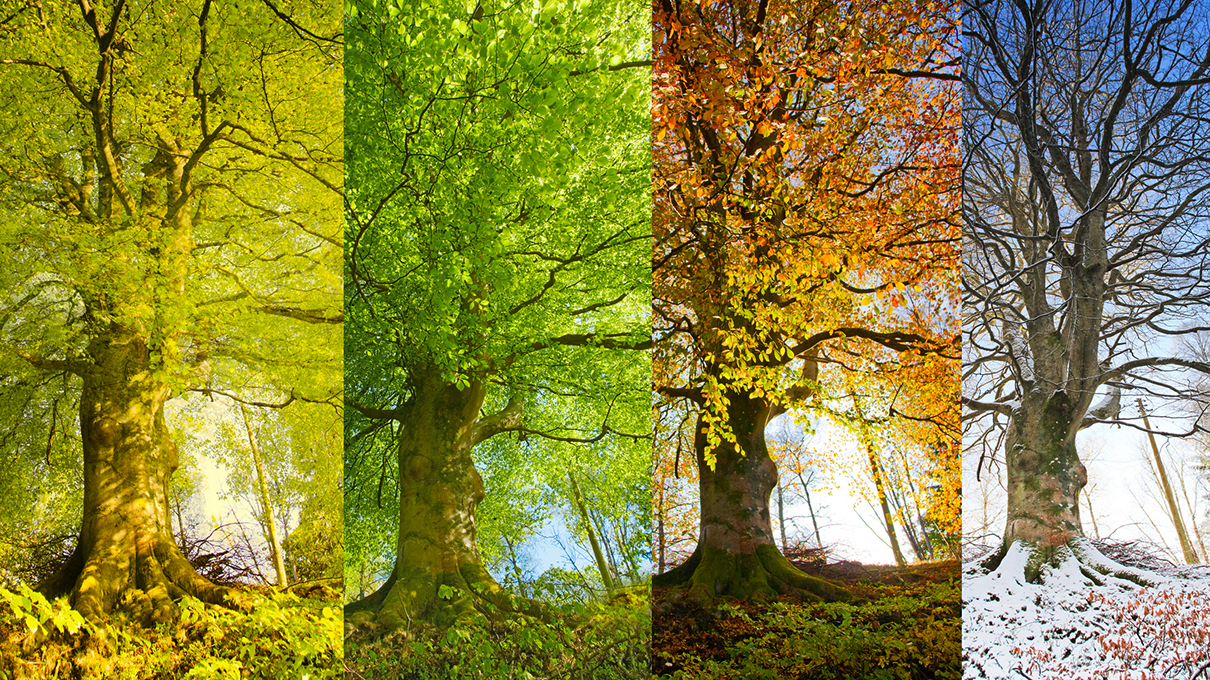Seasons are as old as the earth. We tell time by them, plan our calendar around them and look forward to the changes they bring. But where do seasons come from? Does everyone have seasons? How do they vary in different parts of the world?
Seasons are created by two very important events – the rotation of the Earth that gives us day and night, and the rotation of the Earth around the sun that gives us our year. Because the sun never changes, only the movement of the Earth creates changes in light and darkness, and in temperature.
The orbit of the Earth around the sun is elliptical (a squashed circle), and the planet does not sit straight up and down. It sits at a tilt. As the Earth moves in its path around our star, there are times a certain part of the planet is closer to the sun. If the axis (the imaginary straight line around which the Earth rotates to make day and night) is pointing toward the sun, that hemisphere can expect summer. If the axis is pointed away from the sun on the Earth’s yearly trip, that half of the planet will see winter.
The earth tilts on its axis to change the seasons
Because of this, the Northern Hemisphere of the planet has summer while the Southern Hemisphere experiences winter. It seems as strange for kids in Australia to imagine a white Christmas as it is for kids in New York to think of splashing in the pool in December. That is how it works, though, when the two hemispheres of the Earth are opposite in seasons!
Because seasons are based on the rotation of the planet around the sun, the seasons change at the same time every year, even though the two halves of the planet experience opposite seasons!
Seasons change on or around the 21st of four months: June, September, December and March. In the Northern Hemisphere, December begins winter, March brings on spring, June means summer is beginning and September gives autumn weather. In the Southern hemisphere, the opposite is true. December starts summer, March is the beginning of fall, June starts the winter season and September brings spring.
The Poles stay very cold all year long Some regions do not experience seasons the same way as others, but all parts of the Earth have seasonal changes. For the Polar Regions (the areas at the top and bottom of the Earth) and the temperate zones (the area around the middle), seasons change the amount of daylight and darkness they experience more than the temperature.
At the poles, it stays cold, even in summer, but the daylight seems to never end. The poles will go months without darkness while they are pointed at the sun. During the winter, when they are far from the sun for months at a time, darkness rules, and no sunlight is seen. Icicles are a common site during the winter months
The temperature zones are warm pretty much all year long In the temperate zones, it stays warm during the winter. But the days are long during the summer and shorter during the winter. That is important for plants and animals, which need the seasonal changes to grow and develop correctly, even though the temperature change is small.
Seasons are important all over the Earth, and each part of the planet experiences some type of change as their pole tips toward the sun for three months out of the year. Seasons make our lives more interesting and give us ways to mark the passing of time. They help nature stay in balance, too. It’s a good thing our planet’s axis tips!






